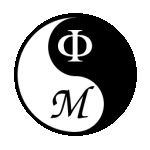 Rigorous Results in Quantum Field Theory & Statistical
Mechanics
Rigorous Results in Quantum Field Theory & Statistical
Mechanics 
GENERAL
Both Quantum Field Theory (QFT) in Euclidean
spacetime and Statistical Mechanics are fields of major interest
in Physics.
From the Mathematics viewpoint, they can be formulated as
measure theories
over spaces of random fields, i.e. spaces of generalized random
processes.
Usually, the corresponding
probability
measures are built up as perturbations, about Gaussians, given
by the interaction
potentials either from Physics or toy models. Roughly speaking,
starting
from measures over (in-)finite dimensional (cutoff) spaces,
Physics is
concerned with the measure properties in some infinite dimension
(no cutoff)
limits: the ultraviolet (continuum) and infrared (thermodynamic)
limits.
Those limits, and so the corresponding measures, are hard to
construct.
The same is true if one wants to the derive the properties
satysfied by
the limiting measures and their moments (ergodicity properties,
physical
axioms, etc), i.e. correlation functions.
Led by Arthur Wightman, at the
beginning, and afterwards by James Glimm, Arthur Jaffe, Ed
Nelson, Tom
Spencer, among others, people started attacking these
mathematical problems
in the 70´s. Heavy and powerful analytical methods as "cluster
expansions"
were developed to replace the physicist's preferred tool: usual
perturbation
(ordinary Taylor) expansion, almost always divergent in the
above cases.
These tools were pushed up in the 80's and accomodate today the
renormalization
group technique (a clever mixture of harmonic analysis &
dynamical
system methods to solve systems of coupled equations). In the
last years,
these methods have been succesfully exported to other fields of
Mathematics.
Sure there are still plenty of
open problems with the reputation of becoming more and more
difficult!
To what concerns my personal
contributions
to the field, after a basic education in theoretical physics and
a MSc
degree in particle physics, I started with constructive field
theory in
France, at the Ecole Polytechnique. My PhD thesis was about the
problem
of constructing the ultraviolet limit for the tridimensional
Gross-Neveu
model with a large number N of fermions. This model is
perturbatively nonrenormalizable
but can be attacked in the framework of the 1/N expansion. It
presents
a nonzero fixed point solution for the renormalization group
map. Afterwards,
I was involved with the project of mass generation in fermionic
theories.
Then, we applied renormalization group techniques to analyze the
critical
O(N>>1) models in dimension 3. Though the original idea
was to extend techniques
developped in my PhD thesis to attack the full model, only some
hierarchical
versions were solved with success by the time being. Lately,
constructive
techniques have been applied to analyze the spectrum of
the time
evolution operator appearing in stochastic differential
equations of the
Landau-Ginzburg type. Precisely, we are interested in obtaining
information
about two-particle bound states, what determines the approach to
equilibrium
of solutions to this system. Part of these projects were done in
collaboration
within the framework of a Mathematical Physics Pronex-CNPq grant
involving
colleagues from the University of São Paulo and from the Federal
University of Minas Gerais. See also my OTHER
ACTIVITIES PAGE.
CURRENT RESEARCH PROJECTS
My current research projects include the determination of the
spectrum of dynamics generators for models in QFT, Classical
Statistical Mechanics and generators associated with some
Stochastic PDEs. In QFT this has to do of the determination of
the particle spectrum of models. In particular, we have
important results involving the Bound State Spectrum for many
systems, including lattice Quantum Chromodynamics models, where
the binding mechanism has been put into evidence and partial
results were shown involving quark confinement.

 To
my front page
To
my front page
